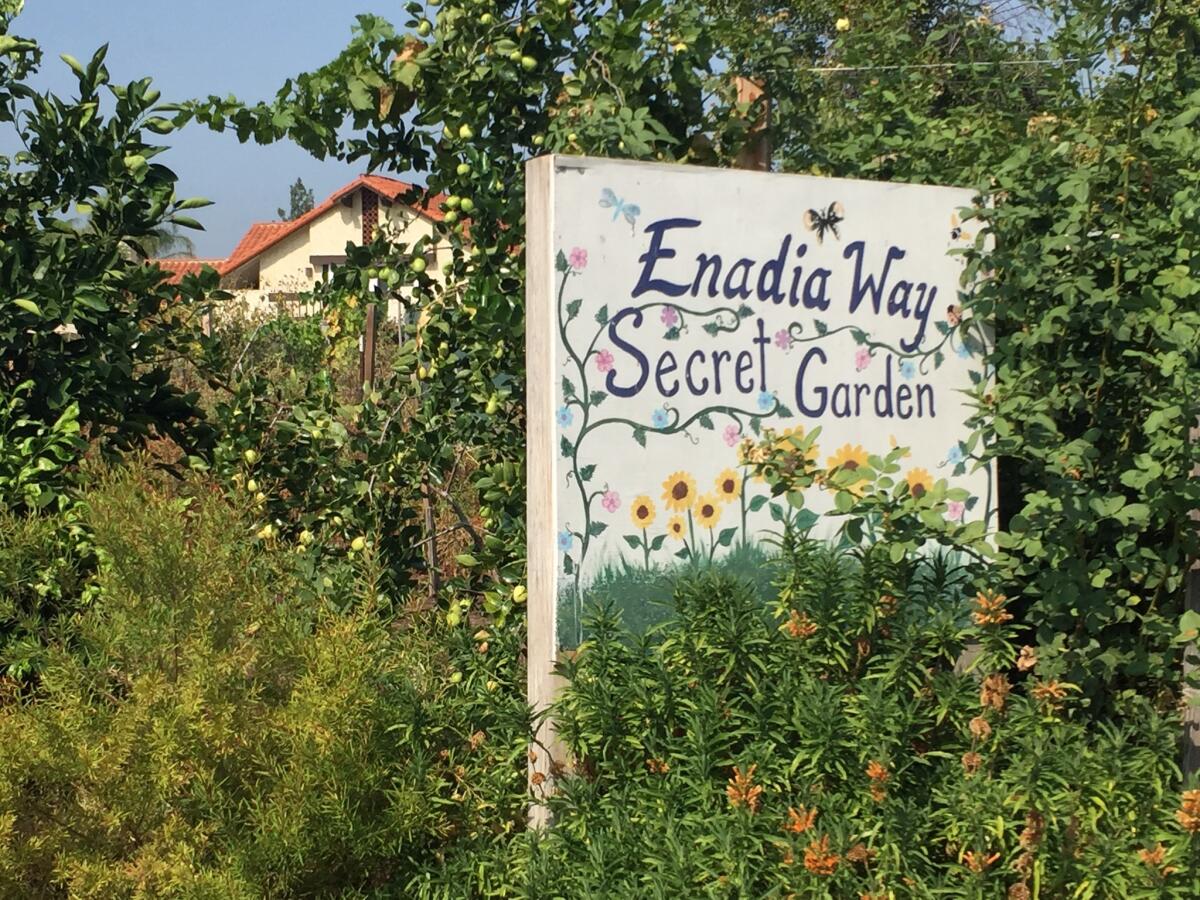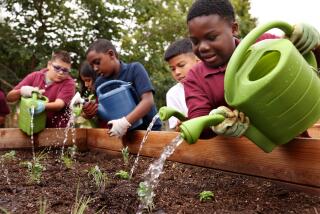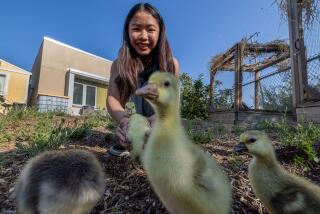L.A. schools teach kids to deal with the drought

Enadia Way Elementary School in Los Angeles has had a garden on campus since 2009.
If youâre a teacher, a garden is a gift that can generate endless assignments and lesson plans.
The scientific lessons are obvious enough. Beyond those, thereâs a lesson for everyone. Kindergartners can look for shapes and colors. The older kids can look at the worms to identify their parts. Or learn the five senses by describing the garden. Or learn descriptive writing.
Now northwest Los Angeles schools are adding to that list of possibilities with a question: How does the drought affect what a school garden should look like?
Since 2009, those are the kinds of lessons that that students at Enadia Way Elementary School in West Hills have been able to learn.
Nine-year-old Joseph Zavalaâs favorite assignment was drawing the plant he liked the most: the âPowis Castleâ species of artemisia. âIt looks like a plant that got snowed on with snowflakes,â he said Wednesday at the school.
It started as a small garden -- just six boxes, filled mostly with flowers. The principal heard that Josephâs dad was an avid gardener, and asked if heâd be interested in volunteering to build it up. Ynes Zavala said yes, and planted some bok choy, some ornamental flowers and some radishes. That was in fall 2009.
Today, that small garden has grown to about 10,000 square feet, filled with fruit trees and vegetable plants, in addition to the flowers. Ynes Zavala is there almost every day, and every class is required to spend half an hour in the garden a week, which theyâll start in September. Tomatoes grow along one row, steps away from squash. On Thursdays during the academic year, the school holds a farmers market where Zavala and students sell the produce, which in turn funds the garden. Last year, they made about $4,000.
Now the district area superintendent, Vivian Ekchian, wants more of the 80-some schools in her district to allow students the same experiences, especially since Common Core science standards incorporate hands-on learning.
The difference now is that the students will develop plans for their own gardens, and theyâll have a big and relevant science lesson built into that planning: the drought.
The Enadia garden expanded to its current size in 2010, before the drought choked many California resources. Before, the area it expanded into was an unused field, Ynes Zavala said. Now, students use extra mulch to keep the soil moist, plant the crops close to each other, and only hand-water the plants that need water.
In 2011, the school also transformed a 4,300-square-foot patch of brown grass into a drought-resistant garden with district funds and resources. Now thereâs a pepper tree that only needs to be watered once a month and gives shade to the lunch area, plus different kinds of cacti and, Zavalaâs favorite, a Cleveland sage plant that he snaps bits off to sniff. Rub one, and your hand smells like sage for the next hour.
Zavala, along with other parents, has helped tend that garden too, and is planning a revamp of it this fall to make it a native garden with almost all California plants.
Ekchian is calling on schools and students to research drought-resistant gardens so they can engage in the curriculum the way that schools like Enadia can, and gain the practical experience Californians need to deal with the drought, she said. Sheâs rolling out the challenge in schools in September, and will collect submissions over the next months.
âResponsible behavior is contagious,â Ekchian said.
At Enadia, itâs a balancing act, said Debra Leith, a landscape designer who volunteers at the school and others. Enadia is not going to stop using its 10,000-square-foot garden, even though it uses more water than an empty patch of asphalt would (Enadia doesnât measure its water use, thought schools could incorporate that into their proposals). But it does teach students that if youâre going to use water, use it for something that gives you sustenance.
Reach Sonali Kohli on Twitter @sonali_kohli or by email at [email protected]
More to Read
Sign up for Essential California
The most important California stories and recommendations in your inbox every morning.
You may occasionally receive promotional content from the Los Angeles Times.











